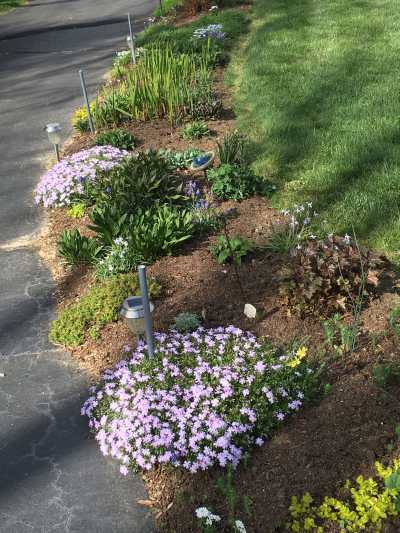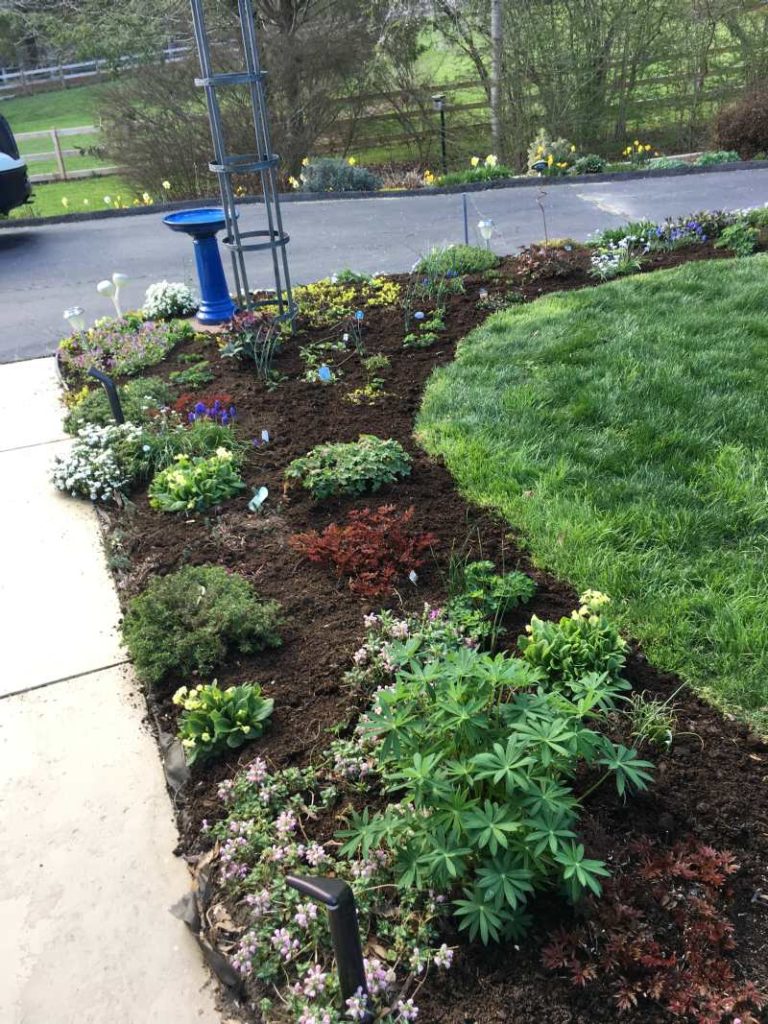Gardening During the Stay at Home Order
go.ncsu.edu/readext?669741
en Español / em Português
El inglés es el idioma de control de esta página. En la medida en que haya algún conflicto entre la traducción al inglés y la traducción, el inglés prevalece.
Al hacer clic en el enlace de traducción se activa un servicio de traducción gratuito para convertir la página al español. Al igual que con cualquier traducción por Internet, la conversión no es sensible al contexto y puede que no traduzca el texto en su significado original. NC State Extension no garantiza la exactitud del texto traducido. Por favor, tenga en cuenta que algunas aplicaciones y/o servicios pueden no funcionar como se espera cuando se traducen.
Português
Inglês é o idioma de controle desta página. Na medida que haja algum conflito entre o texto original em Inglês e a tradução, o Inglês prevalece.
Ao clicar no link de tradução, um serviço gratuito de tradução será ativado para converter a página para o Português. Como em qualquer tradução pela internet, a conversão não é sensivel ao contexto e pode não ocorrer a tradução para o significado orginal. O serviço de Extensão da Carolina do Norte (NC State Extension) não garante a exatidão do texto traduzido. Por favor, observe que algumas funções ou serviços podem não funcionar como esperado após a tradução.
English
English is the controlling language of this page. To the extent there is any conflict between the English text and the translation, English controls.
Clicking on the translation link activates a free translation service to convert the page to Spanish. As with any Internet translation, the conversion is not context-sensitive and may not translate the text to its original meaning. NC State Extension does not guarantee the accuracy of the translated text. Please note that some applications and/or services may not function as expected when translated.
Collapse ▲By Janet Lute, NC Extension Master Gardener
Transylvania County
Pandemics are a bad time for everyone and so many of us are feeling stressed at the moment. But the ‘stay at home’ order does give us more time to get out into our gardens. For this reason, I am so grateful that if this had to happen that it is April and not November. The mild winter and early spring mean that many plants are beginning to come up and there is a lot of work to do out there. Many garden centers are open and have moved their payment counters outside. Remember to maintain the social distancing rule and call before you venture out to make sure that your favorite store is operational. Getting yourself into a garden project or just weeding are also great stress reducers so brush off your tools and go outside.
A great task for this time of year is to top-dress your garden beds with mulch or compost. I love to use mushroom compost as it is rich in nutrients and easy to spread. Various suppliers are still open for pickup or delivery but again check first before making an unnecessary trip, or you may have your own compost ready to go. Mulch is best spread before plants get too large as it is much easier to work around small shoots or flowering bulbs at this time of the year. A wheelbarrow can be a great help and in places, you may be able to dump the entire load in a couple of spots and then spread it out with your hands. For tighter spots, I use a 2-gallon tub (anything with a handle will do). It is not too heavy to carry and you can scoop out smaller amounts and spread it around. A one to two-inch layer in flower beds is plenty and I usually go for the lower depth. The rain will wash the nutrients into the ground and your garden already looks neat and tidy. Use wood chip mulch on areas where you do not want anything to grow through such as around the base of trees. For your flower garden beds, I recommend mushroom compost, regular compost or leaf mold.
Weeding is an evitable task in the spring and if you are going to spread mulch/compost then make sure you remove weeds before spreading anything on top. I find this task very soothing so fire up your favorite music or podcast and get going. Do be familiar with your weeds. Some are very obvious but others can be confused with a plant that you want to keep. An example of this is wild onion and the leaves of iris reticulata. If you pull something up that is not a weed then you can probably plant it back in the ground. If you are unsure if it really is a weed, leave it and watch its development. Eventually, it will tell you. Some weeds come out very easily especially after a period of rain, but others need a tool such as a dandelion weeder that allows you to get the whole root out. Don’t put weeds into your compost bin, have a separate area to dispose of them.
If you have spring bulbs planted they should be in flower about now. There is really not a lot of work to do with bulbs, so pick a bunch for the house and enjoy. You don’t have to deadhead daffodils but I do this sometimes. Just clip off the flower head and let it fall onto the ground, it will soon decompose. But don’t cut back the leaves until the foliage has turned yellow and died back. Many people do not like the untidy look of drooping daffodil leaves but if they are planted amongst other perennials you will soon find that you cannot see them. Daffodils with hosta are a good mix as the hosta leaves soon outgrow and cover the old daffodil leaves.
Now is a great time to cut back any perennials that you may have left untrimmed in the fall. Cut the long and now dead stalks back as far as you can so that the new growth can develop unimpeded. This is also a good time to divide and move plants, especially those that flower later. Look for perennials that have grown into a large circle with plantlets around the outside and a blank area in the middle, or anything that is just too big. Sometimes you have to be brutal and get out the garden spade. Don’t worry about the raw edges as these will grow over in no time. Take care that you move new divisions to empty areas in your garden where they won’t compete with existing plants. At this time of year, some plants have not started to sprout yet. Perennials that wake up late include leadwort (ceratostigma), milkweed (asclepias), false indigo (baptisia), ferns, balloon flower (platycodon), hibiscus and coneflower (echinacea). It is always useful to have a garden plan and if you have not done this before this would be another good project to begin, it does not have to be fancy.
Pruning is another good spring task and easier to do before the shrub has not really started to produce many leaves. Many summer flowering shrubs such as beautyberry can be cut back by removing one-third of the older stems and thinning out the center and dead branches. Do not prune too late or you will remove the blooms that come later. If a shrub has spring blooms then leave it alone until the blossoms have died off and then prune it if needed. This applies to forsythia, azaleas, deutzia, viburnum, weigela, ninebark, and many other spring bloomers.
For the vegetable gardening enthusiasts now is the time to start your seed propagation making sure to time your starts for the appropriate time to transplant into your garden. Some vegetable seeds can be sown into the ground directly and before the last frost date. These include arugula, beets, broccoli, cabbage, carrots, peas, kale, lettuce, onions, potato sets, and chard. That last frost date in Brevard is around May 3rd. with a standard deviation of 11 days either side of this date.
Many of these tasks can be accomplished by not leaving your garden; consider mail order for seeds and sets. These NC State Extension Publications contain a wealth of tips for gardening at any time of the year. Take care that you do not overdo the strenuous labor by taking rests to admire your handiwork and water breaks. By the time the pandemic begins to recede, you should have a wonderful garden to enjoy this summer.
If you would like more information on the tasks listed above, a more comprehensive list of tasks in the garden or have an idea for an article, contact the Extension office by emailing mmickew@ncsu.edu.






